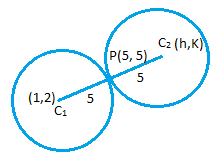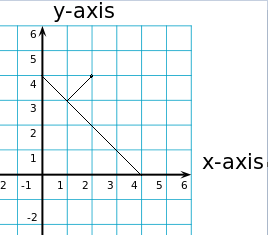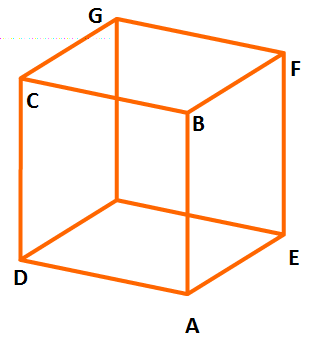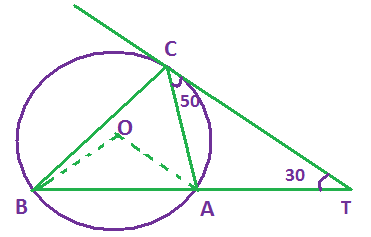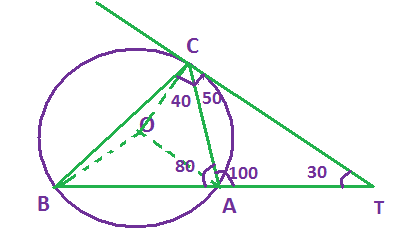Exams > Cat > Quantitaitve Aptitude
GEOMETRY SET I MCQs
:
D
The given tangents are
2x+3y-9 = 0
4x+6y+19 =0
Or 2x + 3y + 192 = 0
Which are parallel, than distance between parallel tangents must be diameter of the circle than diameter.
∣∣∣192−(−9)∣∣∣√22+32=372√13
Radius = 12 diameter = 374√13
:
A
The given circle is x2+y2−2x−4y−20=0 with centre (1, 2) and radius = √1+4+20=5.
And required circle has radius 5 hence circles touch each other externally.
Since point of contact is P(5, 5).
P is the mid point of C1 and C2, let co – ordinate of centre C2 is (h, k) then
1+h2=5;h=9
2+k2=5; k = 8
And, Equation of required circle is (x−9)2+(y−8)2=52
x2+y2−18x−16y+120=0; Option(a)
:
B
option (b)
To have an x-intercept 4, the value at y=0 should give x=4.
Put y=0 in all 3 answer options.
Option a and b give x=4
:
A
1st method: - equation of any straight line passing through the intersection of the lines x + 2y = 3 and 2x – 3y= 4 is
λ(x + 2y – 3) + (2x – 3y – 4) = 0
Since it passes through the point (2, 1)
λ(2 + 2 – 3) + (4 – 3 – 4) = 0
λ - 3 = 0
λ = 3
Now substituting this value of λ in (i), we get
3(x + 2y – 3) + (2x – 3y – 4) = 0
5x + 3y – 13 = 0
2nd method: - The straight line passing through the point (2, 1), put x = 2 and y = 1only option (a) and (b) will satisfy. Now, intersection point of the lines x + 2y = 3 and 2x – 3y= 4 is (177,27), Put x = 177 and y = 27 only option(a) will satisfy. Option(a).
:
A
The side length of a cube = AD = a
The diagonal length of a cube = AG = a√3
DF = AG = CE = a√3
The triangle formed was an equilateral triangle.
The circumradius of an equilateral triangle = s√33
Therefore, the circumradius of that triangle = a√3√33
= Side of a cube
Answer the questions on the basis of the information given below :In the adjoining figure, I and II are circles with centers P and Q respectively. The two circles touch each other and have a common tangent that touches them at points R and S respectively. This common tangent meets the line joining P and Q at O. The diameters of I and II are in the ratio 4 : 3. It is also known that the length of PO is 28 cm.
What is the ratio of the length of PQ to that of QO? (2004)
:
B
From the given diagram,
OQSQ=OPRP
OQOP=SQRP=34
Therefore, PQOQ=13
Answer the questions on the basis of the information given below:
In the adjoining figure, I and II are circles with centres P and Q respectively. The two circles touch each other and have a common tangent that touches them at points R and S respectively. This common tangent meets the line joining P and Q at O. The diameters of I and II are in the ratio 4 : 3. It is also known that the length of PO is 28 cm.
What is the radius of the circle II?
:
B
PQOQ=13
PQ=14(28)=7
MPMQ=43(M is point of intersection of two circles)
MQ=3cm
Answer the questions on the basis of the information given below:
In the adjoining figure, I and II are circles with centres P and Q respectively. The two circles touch each other and have a common tangent that touches them at points R and S respectively. This common tangent meets the line joining P and Q at O. The diameters of I and II are in the ratio 4 : 3. It is also known that the length of PO is 28 cm.
The length of SO is:
:
C
OS=√212−32=12√3

